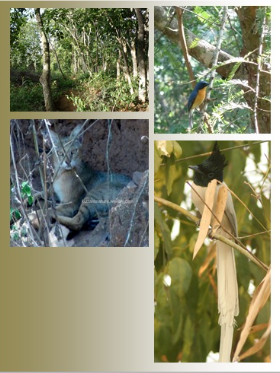Wilderness Preservation
Over the years we have seen the land transform from a barren, lifeless, , over-grazed, burnt and eroded landscape to a vibrant scrub jungle with a natural diversity of plants and animal species. Today Navadarshanam is home to thousands of plants – grasses, shrubs and trees as well as over 100 species of birds, all kinds of snakes, lizards, insects as well as smaller mammals like rabbit, mongoose, wild boar, deer, the occasional leopard, sloth bear and at certain times of the year wandering elephants and bison. As we have watched the ecosystem regenerate with awe and wonder, we also realize how precious regenerative ecosystems like Navadarshanam are and how important it is to let them continue to unfold for eternity and let generations to come marvel at the little mysteries that they reveal. We look up this as a grand heritage to be shared and passed on to future generations – how can we own the freshness of the air or the sparkle of the water or the sounds of the birds chirping or the warmth of the land.
Our practical approach to reforestation and wilderness preservation is best captured in these words:
“ Natural plant groupings form through dynamic relationships among species and the environment over long periods. The natural landscape works – harvests water, builds soil, minimizes disease and pest, reproduce themselves, have copious yields, have a grand diversity of species and work a plethora of ways that we cannot even comprehend. All this while still looking absolutely beautiful.”
The philosophical underpinnings that guide our wilderness preservation activities are best captured in these words:
“What is there to life if a man cannot hear the lonely call of the lapwing or the arguments of the frogs around a pond at night? What is a man without the wild animals? If all the wild things are gone, man will suffer from a deep loneliness of spirit.
All things are connected. Whatever befalls the earth befalls the sons of the earth. Man did not weave the web of life, he is merely a strand in it. Whatever he does to the web, he does to himself. This we know: the earth does not belong to man, man belongs to the earth.”

